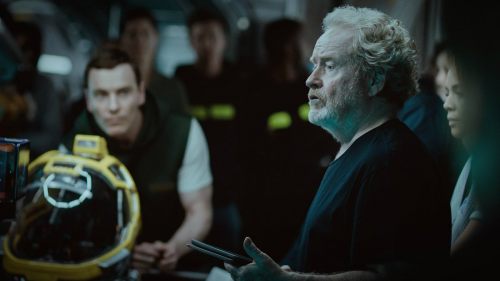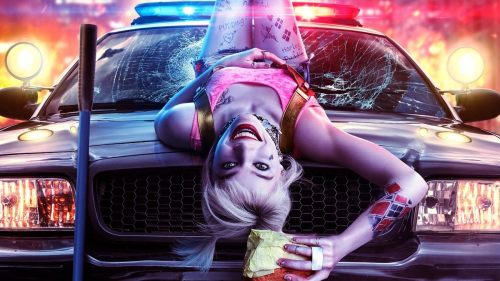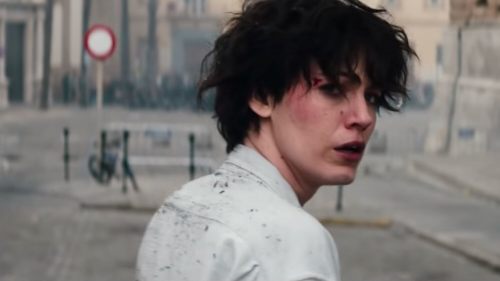SCARY STORIES TO TELL IN THE DARK Review: Like GOOSEBUMPS Without The Training Wheels
Heading into André Øvredal's Scary Stories to Tell in the Dark, my prediction was that he, executive producer Guillermo del Toro and screenwriters Dan and Kevin Hageman had probably cooked up something that would feel a lot like Goosebumps, though perhaps just a bit gnarlier. I am pleased to report that this prediction was not only accurate, but actually undersold the reality: Scary Stories to Tell in the Dark goes way harder than I expected it to, and the result is not only one of the best horror movies of the year, but also one of the best kids' horror movies, period. Consider me deeply impressed.
Øvredal's film is set in Mill Valley, PA, 1968. A charming trio of teenagers - bookworm Stella (Zoe Margaret Colleti), lovable dork Auggie (Gabriel Rush) and incorrigible smartass Chuck (Austin Zajur) - get together to celebrate Halloween, and in the process they manage to draw the ire of the town's local bully, Tommy (Austin Abrams). Seeking refuge inside a car at a drive-in movie theater (where Night of The Living Dead is screening, naturally), the crew crosses paths with another teen by the name of Ramon (Michael Garza). He and Stella hit it off almost immediately, and it doesn't take long before someone suggests visiting the legendarily haunted house on the edge of town.
This is the Bellows House, home to a family whose paper mill basically put Mill Valley on the map. That's not their real claim to fame, though. See, this family had a troubled history - a suicide, rumblings from the locals about "black magic", some questionable involvement with a local sanitarium - and the spirit of Sarah Bellows is said to haunt their long-abandoned home to this very day. The kids head inside, discover an old book filled with stories written by Bellows herself, and then...well, then the shit hits the fan. Sarah's scary stories have a way of predicting the fates of those whose names appear within them, and it's not long before that haunted tome is sending one horrifying creature after another in pursuit of our new pals.
The narrative is, admittedly, mostly a delivery system for a series of set pieces built around a handful of stories you may or may not recall from Alvin Schwartz's Scary Stories to Tell in the Dark. You won't care, though: the set pieces are dynamite, and all your favorite characters are here. The Pale Lady shows up. The Jangly Man makes an appearance. Ya boi Harold is in the mix. Someone gets bitten by a spider, thus allowing "The Red Spot" to play out pretty much as you remember it. A rotting, shambling corpse comes to collect when one of the teens is framed for stealing said cadaver's big toe. The VFX that have been deployed to bring these creatures to life (each of them a pitch-perfect recreation of the Stephen Gammell artwork that appeared in Schwartz's short story collections) are truly grotesque. Nevermind the masterfully-executed jump scares (Øvredal's one of the very few directors who knows how to do these well) and the ominous lighting: just looking at The Pale Lady was enough to make my skin crawl. I really cannot overstate how satisfying and freakish these designs are. Put simply, they will fuck your kids up.
Which is the whole point, right? This isn't a hardcore horror movie aimed at 35-year-old gorehounds who grew up reading Schwartz's novels. This is an introduction to those stories for those gorehounds' kids, told in an entirely different medium and in a completely different context. My biggest fear about this movie was that it'd underplay its hand, turning Gammel's terrifying illustrations into cartoonish villains who never pose a real threat to our heroes. I can confidently say this is not the case. Øvredal treads very lightly on any material one might consider "gory", but he does not shy away from making Scary Stories' monsters truly monstrous. As a longtime fan of this property, it's very satisfying to know that an entirely new generation will have the opportunity to have the absolute shit scared out of them by this material. It's an adaptation worthy of the source material, yes, but it's also worthy of a lot of my own cherished childhood memories.
The cast is uniformly solid, with every character behaving more or less how you'd expect teenagers to behave: they get up to no good, they rag on each other, they get horned up at the drop of a hat. Much like the political and racial subtext that runs just under the surface of the story (yeah, you heard me), the likability and relatability of Scary Stories' four primary characters adds a level of depth to the film that, quite frankly, I don't think most kids' movies ever bother with. When we talk about how kids' movies don't have to be lowest-common-denominator junk, Scary Stories to Tell in the Dark is the kind of movie we're asking those other movies to be.
In his third at-bat, André Øvredal has hit yet another home run. Scary Stories to Tell in the Dark can't match Øvredal's The Autopsy of Jane Doe in terms of violence or gore, but it certainly reaffirms what another thing that movie taught us: this director knows how to play an audience like a fiddle, and his talent for delivering intense set-pieces with clockwork precision cannot be denied.
More, please.



